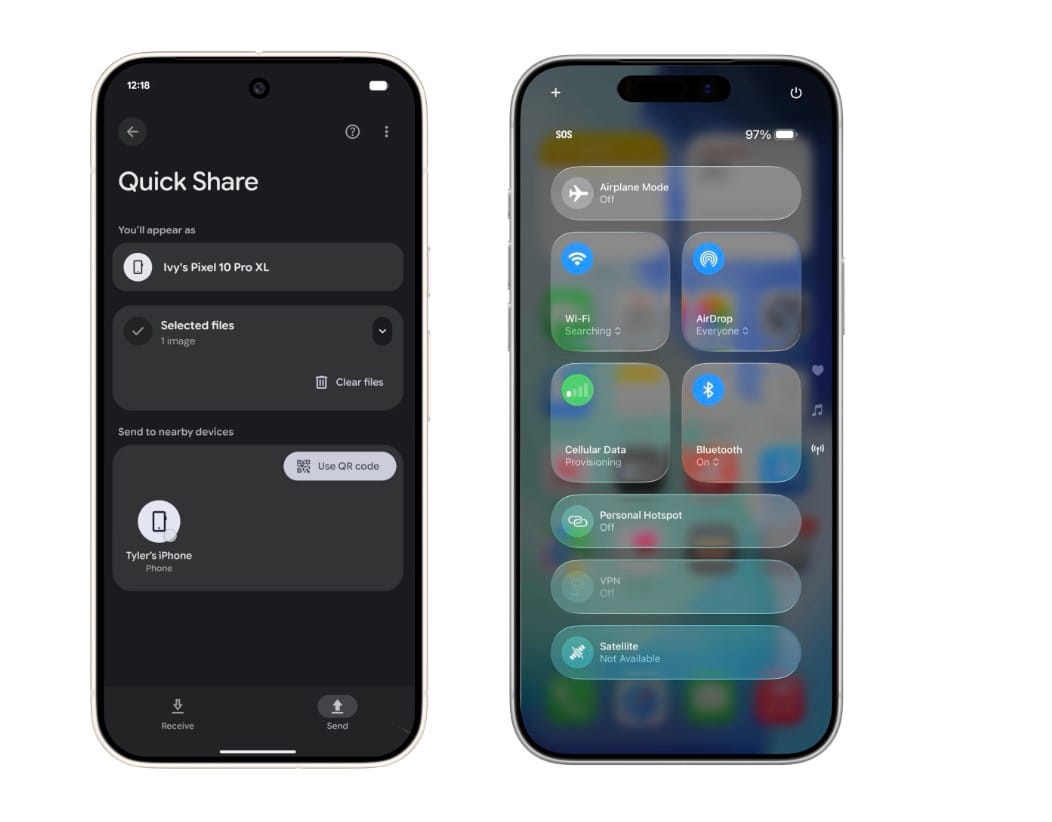Apple unveiled the M5 chip, marking the most significant leap in Apple Silicon since the groundbreaking M1 debuted five years ago. Built using third-generation 3-nanometer technology, the M5 represents a fundamental reimagining of what a computer processor can be, with artificial intelligence woven into every aspect of its architecture.
Executive Summary
The M5 isn't just an incremental update—it's a transformative processor that positions Apple at the forefront of AI-powered computing. With Neural Accelerators embedded in every GPU core, dramatically increased memory bandwidth, and the world's fastest performance CPU core, the M5 delivers performance gains that would have seemed impossible just a few years ago.
Key Highlights:
- Over 4x the peak GPU compute for AI vs M4
- Over 6x the peak GPU compute for AI vs M1
- 153GB/s unified memory bandwidth (30% increase over M4)
- 10-core GPU with dedicated Neural Accelerators in each core
- 10-core CPU featuring the world's fastest performance core
- 45% faster graphics performance than M4
- Third-generation ray tracing engine
Architecture Overview: Built for AI First
The Silicon Foundation
The M5 is manufactured using TSMC's advanced N3P (third-generation 3-nanometer) process node, an evolution from the N3E process used in the M4. This newer fabrication technology delivers:
- Higher transistor density for more compute power in the same space
- Improved power efficiency through refined manufacturing techniques
- Better thermal characteristics allowing sustained performance
- Enhanced yield rates for consistent chip quality
While Apple hasn't disclosed the exact transistor count, the M5's architecture suggests a significant increase over the M4's configuration, enabling the additional Neural Accelerators and improved memory subsystem.
System-on-a-Chip Integration
Like all Apple Silicon, the M5 integrates multiple components into a single unified chip:
- CPU cores (performance and efficiency)
- GPU with Neural Accelerators
- 16-core Neural Engine
- Unified memory architecture
- Media encode/decode engines
- Image Signal Processor (ISP)
- Secure Enclave
- Thunderbolt/USB 4 controllers
- Advanced power management
This integration delivers substantial advantages over traditional multi-chip designs, including reduced latency, lower power consumption, and simplified thermal management.
The Revolutionary GPU: Neural Accelerators Change Everything
Next-Generation 10-Core GPU Architecture
The M5's GPU represents the most dramatic architectural shift in Apple Silicon history. Each of the 10 GPU cores contains a dedicated Neural Accelerator, creating what Apple calls "a compute block optimized for AI."
GPU Specifications:
- 10 cores (up from 7-10 cores in M4, depending on configuration)
- Neural Accelerator per core (entirely new to M5)
- Enhanced shader cores for improved graphics performance
- Third-generation ray-tracing engine
- Second-generation dynamic caching for efficient resource allocation
- Metal 4 API support with Tensor APIs for direct Neural Accelerator programming
AI Performance: A 4x Generational Leap
The Neural Accelerators embedded in each GPU core deliver unprecedented AI performance:
Peak GPU Compute for AI:
- 4x faster than M4
- 6x faster than M1
This performance advantage manifests in real-world applications:
- Diffusion models (e.g., Draw Things): Generate images up to 2x faster than M4
- Large language models (e.g., webAI): Run locally with dramatically improved inference speed
- Video upscaling (e.g., DaVinci Resolve): Process footage up to 2.3x faster than M4
- 3D rendering (e.g., Octane X): Render complex scenes up to 1.5x faster than M4
Graphics Performance: Gaming and Professional Workflows
Beyond AI, the M5's GPU delivers substantial improvements for traditional graphics workloads:
Graphics Performance vs M4:
- Up to 45% faster overall graphics performance
- Up to 30% faster without ray tracing
- Third-generation ray tracing for realistic lighting and reflections
Graphics Performance vs M1:
- Up to 2.5x faster overall graphics performance
- Supports modern rendering techniques unavailable on M1
Real-World Impact:
- Gaming: Up to 3.2x higher frame rates than M1, with ray-traced games showing the biggest gains
- Video editing: Smoother timeline scrubbing and real-time effects
- 3D applications: Faster viewport rendering and final output
- Mixed reality: 10% more pixels rendered on Vision Pro displays at up to 120Hz
Software Integration
The GPU architecture seamlessly integrates with Apple's frameworks:
- Core ML: Automatic performance gains for machine learning models
- Metal Performance Shaders: Optimized for Neural Accelerator execution
- Metal 4: Direct access to Neural Accelerators via Tensor APIs
- Create ML: Enhanced training and inference performance
Developers can leverage these Neural Accelerators without rewriting code—apps using Apple's frameworks automatically benefit from the new architecture.
The CPU: The World's Fastest Performance Core
10-Core CPU Configuration
The M5 features a sophisticated hybrid architecture:
- 4 performance cores (high-power "Firestorm" successors)
- 6 efficiency cores (low-power "Icestorm" successors)
Apple claims the M5's performance cores are "the world's fastest CPU core," a bold statement backed by impressive benchmark results.
Performance Metrics
Multithreaded Performance:
- Up to 15% faster than M4
- Up to 2x faster than M1
Single-Core Performance:
- Approximately 10% faster than M4 (based on early benchmarks)
- Significantly faster than M1 in all workloads
Real-World Application Performance vs M1:
- Xcode compilation: Up to 2.1x faster
- Video transcoding: Up to 6x faster
- Machine learning inference: Dramatically improved with Neural Engine and GPU accelerators
- General productivity: Snappier app launches and multitasking
CPU Architecture Enhancements
While Apple hasn't disclosed all architectural details, the M5's performance improvements likely stem from:
- Improved branch prediction for better instruction flow
- Larger cache configurations for faster data access
- Enhanced execution units for higher throughput
- Better memory prefetching to reduce latency
- Optimized power delivery for sustained performance
Power Efficiency
Despite the performance gains, the M5 maintains Apple Silicon's legendary efficiency:
- Delivers full performance on battery power
- Minimal heat generation even under sustained load
- Enables fanless designs (like MacBook Air, expected in future updates)
- Contributes to 24-hour battery life in MacBook Pro
The Neural Engine: Accelerating Apple Intelligence
16-Core Neural Engine
The M5 includes an improved 16-core Neural Engine, complementing the GPU's Neural Accelerators to create a comprehensive AI processing system.
Neural Engine Characteristics:
- 16 cores (same count as M4, but faster)
- Specialized for on-device AI workloads
- Optimized for Apple Intelligence features
- Works in concert with CPU and GPU for maximum efficiency
AI Workload Distribution
The M5's three-tier AI processing system allows intelligent workload distribution:
- Neural Engine: Best for sustained, power-efficient AI tasks
- Voice recognition and processing
- Background image analysis
- Continuous machine learning inference
- GPU Neural Accelerators: Optimal for high-performance AI with graphics
- Real-time image generation
- Video processing with AI effects
- Mixed reality rendering with AI enhancements
- CPU: Handles general machine learning tasks
- Quick inference for simple models
- Coordination between Neural Engine and GPU
- Low-latency decision making
Apple Intelligence Performance
The faster Neural Engine enhances Apple Intelligence features:
- Image Playground: Faster image generation
- Writing Tools: Improved responsiveness
- Genmoji: Quicker custom emoji creation
- Live Translation: Lower latency in FaceTime and Messages
- Spatial Scenes: Faster 2D-to-3D photo conversion (Vision Pro)
- Persona generation: Enhanced fidelity and speed (Vision Pro)
Developer Benefits
Developers using Apple's Foundation Models framework will see:
- Faster model training on-device
- Improved inference performance
- Better support for larger models
- More responsive AI-powered features
Memory Architecture: The Foundation of Performance
Unified Memory Bandwidth
The M5's memory subsystem represents a crucial upgrade:
Memory Bandwidth:
- 153GB/s (M5)
- 120GB/s (M4) — 27.5% slower
- 68.25GB/s (M1) — 124% slower
This dramatic bandwidth increase enables:
- Faster data transfer between CPU, GPU, and Neural Engine
- Ability to run larger AI models entirely on-device
- Improved multitasking with multiple demanding apps
- Better sustained performance under heavy workloads
Unified Memory Architecture
Apple's unified memory architecture means all processing components share a single memory pool:
Benefits:
- No data copying: CPU, GPU, and Neural Engine access the same data
- Lower latency: Eliminates traditional memory management overhead
- Better efficiency: Reduced power consumption from memory operations
- Larger effective memory: No partition between system and graphics RAM
M5 Memory Configuration:
- Up to 32GB maximum capacity
- LPDDR5 memory for high bandwidth and efficiency
- Starting configurations: 12GB (256GB/512GB storage models) to 16GB (higher-end configs)
Impact on AI Workloads
The increased memory bandwidth particularly benefits AI:
- Large language models can be loaded faster
- Training datasets can be processed more efficiently
- Neural networks with many parameters run smoother
- Real-time AI features have lower latency
Media Engine: Professional Video Performance
Hardware Acceleration
The M5 includes a powerful media engine with dedicated accelerators:
- H.264 encode/decode
- HEVC (H.265) encode/decode
- ProRes encode/decode (including ProRes RAW)
- AV1 decode support
Video Editing Performance
Professional video workflows see substantial improvements:
- Final Cut Pro: Up to 6x faster video transcoding vs M1
- DaVinci Resolve: Up to 3.7x faster AI video upscaling vs M1
- Adobe Premiere Pro: Smoother timeline performance with effects
- Multi-stream playback: Handle more 4K/8K streams simultaneously
Image Signal Processing
The enhanced ISP supports:
- Better computational photography
- Improved camera performance on compatible devices
- Hardware-accelerated image processing
- Enhanced video capture capabilities
M5 vs M1: Five Years of Innovation
To truly appreciate the M5's capabilities, we must compare it to the original M1 that launched Apple's silicon revolution in November 2020.
Complete Specifications Comparison
| Specification | M5 (2025) | M1 (2020) | Improvement |
|---|---|---|---|
| Process Node | 3nm (N3P) | 5nm | Major density increase |
| Transistors | Undisclosed | 16 billion | Significantly more |
| CPU Cores | 10 (4P+6E) | 8 (4P+4E) | 2 more efficiency cores |
| CPU Performance | World's fastest | Industry-leading (2020) | ~2x multithreaded |
| GPU Cores | 10 | 7-8 | 2-3 additional cores |
| GPU Performance | Up to 2.5x faster | 2.6 TFLOPS | Massive leap |
| Ray Tracing | 3rd gen hardware | None | New capability |
| Neural Accelerators | Per GPU core (10) | None | Revolutionary addition |
| Neural Engine | 16-core (enhanced) | 16-core | Faster, more efficient |
| AI Performance | 11 TOPS (NE) | 11 TOPS (NE) | GPU adds 4x AI compute |
| Memory Bandwidth | 153GB/s | 68.25GB/s | 124% increase |
| Max Unified Memory | 32GB | 16GB | Doubled capacity |
| Media Engine | Enhanced ProRes | Basic | AV1, better ProRes |
| Metal Version | Metal 4 | Metal 2 | Two generations ahead |
| Wireless | N1 chip support | None | Wi-Fi 7, BT 6, Thread* |
| Power Efficiency | Best in class | Industry-leading | Further improved |
*When paired with N1 chip in devices like iPad Pro
Performance Evolution: Real-World Comparisons
CPU Performance vs M1:
- General computing: Up to 2x faster multithreaded
- Single-threaded: Approximately 30-40% faster
- Code compilation: Up to 2.1x faster (Xcode)
- Compression/decompression: Significantly faster
GPU Performance vs M1:
- Graphics rendering: Up to 2.5x faster
- 3D rendering with ray tracing: Up to 6.7x faster (Octane X)
- Game performance: Up to 3.2x higher frame rates
- Video editing: Smoother with more effects
AI Performance vs M1:
- GPU AI workloads: Up to 6x faster peak compute
- Image generation: Up to 4x faster (Draw Things)
- Video upscaling: Up to 3.7x faster (DaVinci Resolve)
- Machine learning inference: Dramatically improved across all frameworks
Memory Performance vs M1:
- Bandwidth: 124% increase (153GB/s vs 68.25GB/s)
- Capacity: 2x maximum (32GB vs 16GB)
- Multitasking: Significantly more headroom
Video Editing vs M1:
- Final Cut Pro transcoding: Up to 6x faster
- 4K/8K stream handling: Many more simultaneous streams
- Effects processing: Real-time with complex effects
- Export times: Dramatically reduced
Architectural Evolution
The journey from M1 to M5 represents five years of relentless innovation:
M1 (2020) - The Revolution:
- First Apple Silicon for Mac
- 5nm process technology
- Proved ARM could compete with x86
- Unified memory architecture
- Industry-leading efficiency
M2 (2022) - Refinement:
- Second-generation 5nm
- 18% faster CPU, 35% faster GPU
- Improved media engine
- Up to 24GB memory
M3 (2023) - 3nm Transition:
- First 3nm Mac chip
- Hardware ray tracing introduced
- Dynamic caching for GPU
- Mesh shading support
M4 (2024) - AI Focus:
- Second-generation 3nm
- Enhanced Neural Engine
- Improved ray tracing
- Foundation for Apple Intelligence
M5 (2025) - AI Integration:
- Third-generation 3nm
- Neural Accelerators in GPU
- 153GB/s memory bandwidth
- AI woven throughout architecture
The M1 Legacy
The M1 set impossible standards when it launched:
- Outperformed many high-end Intel chips while using less power
- Enabled fanless MacBook Air with pro-level performance
- Delivered 15-20 hour battery life in laptops
- Proved Apple could design world-class processors
- Launched the end of the PC industry's Intel/AMD duopoly
The M5 builds on this foundation, but takes Apple Silicon into a new era where AI isn't an afterthought—it's fundamental to the design.
Power Efficiency: The Apple Silicon Advantage
Thermal Design
The M5 maintains Apple Silicon's exceptional thermal characteristics:
- Low heat output even under sustained load
- Passive cooling capable (in appropriate designs)
- Consistent performance regardless of thermal state
- Quiet operation with minimal fan noise
Battery Life
Devices powered by M5 achieve remarkable battery longevity:
- MacBook Pro: Up to 24 hours (4 more hours than M1 models)
- iPad Pro: All-day usage with power-intensive apps
- Vision Pro: Extended sessions without constant charging
Performance Per Watt
Apple claims the M5 delivers:
- Better performance per watt than any competing laptop chip
- Consistent performance on battery vs plugged in
- Industry-leading efficiency for sustained workloads
This efficiency enables:
- Thinner, lighter device designs
- Longer battery life across all use cases
- Reduced environmental impact over product lifetime
Software Optimization: The Complete Package
Operating System Integration
The M5's capabilities are fully leveraged by Apple's operating systems:
macOS Tahoe:
- Optimized system-wide for M5 architecture
- Enhanced Apple Intelligence integration
- Better memory management for 32GB configurations
- Improved background task handling
iPadOS 26:
- Desktop-class multitasking utilizing M5 power
- Professional app support (Final Cut Pro, Logic Pro)
- Enhanced Files app for complex workflows
- Apple Intelligence features throughout
visionOS 26:
- 120Hz display support enabled by M5
- Enhanced spatial computing with AI
- Improved Persona rendering
- Lower latency for mixed reality
Framework Support
Developers benefit from comprehensive framework optimization:
Metal 4:
- Direct Tensor API access to Neural Accelerators
- Enhanced shader capabilities
- MetalFX upscaling with AI
- Better debugging tools
Core ML:
- Automatic optimization for M5 hardware
- Support for larger models
- Faster training and inference
- On-device model optimization
Accelerate Framework:
- SIMD optimizations for M5
- Matrix multiplication acceleration
- Signal processing improvements
Foundation Models:
- Apple's AI framework optimized for M5
- Faster LLM inference
- Better multimodal model support
Application Ecosystem
Professional applications show remarkable performance:
Adobe Creative Suite:
- Photoshop: Faster filters and AI features
- Premiere Pro: Real-time 4K/8K editing
- After Effects: Improved rendering
- Lightroom: Faster AI enhancements
Apple Pro Apps:
- Final Cut Pro: 6x faster transcoding vs M1
- Logic Pro: More tracks and plugins
- Compressor: Dramatically faster exports
- Motion: Real-time complex effects
3D and CAD:
- Blender: Up to 6.8x faster vs M1
- AutoCAD: Smoother large file handling
- Cinema 4D: Better viewport performance
Development Tools:
- Xcode: Up to 2.1x faster builds vs M1
- Docker: Better containerization performance
- ML frameworks: TensorFlow, PyTorch optimized
Gaming: A Growing Focus
Gaming Performance Improvements
While Mac gaming still trails dedicated gaming systems, the M5 represents significant progress:
Frame Rate Improvements:
- Up to 3.2x higher frame rates vs M1
- Consistent 60+ FPS in many modern titles
- Ray tracing support for realistic lighting
- MetalFX upscaling for better visuals with maintained performance
Notable Games:
- Resident Evil Village: Smooth gameplay with ray tracing
- Baldur's Gate 3: Playable at high settings
- No Man's Sky: Improved performance
- Death Stranding: Enhanced visual fidelity
Game Porting Toolkit 2.0
Apple's Game Porting Toolkit benefits from M5:
- Faster translation of Windows games
- Better compatibility with DirectX
- Improved performance in translated titles
- Easier porting for developers
Metal 4 Gaming Features
The M5's GPU and Metal 4 enable:
- Hardware-accelerated ray tracing
- MetalFX spatial upscaling
- Mesh shaders for efficient geometry
- Variable rate shading
- Fast resource loading
Enterprise and Professional Use Cases
Computational Workloads
The M5 excels at professional computing tasks:
Scientific Computing:
- Faster simulations with enhanced CPU/GPU
- Better MATLAB/Mathematica performance
- Improved Python scientific libraries
Financial Modeling:
- Faster Excel with large datasets
- Better Bloomberg Terminal performance
- Enhanced algorithmic trading applications
Data Science:
- Improved Jupyter Notebook performance
- Faster pandas/NumPy operations
- Better TensorFlow/PyTorch training
Content Creation
Professional creators benefit enormously:
Video Production:
- 8K timeline editing in real-time
- Multiple ProRes streams simultaneously
- Faster color grading
- AI-powered effects processing
Photography:
- Instant RAW processing
- AI-enhanced batch editing
- Faster noise reduction
- Better lens corrections
3D Animation:
- Smoother viewport performance
- Faster rendering times
- Real-time ray tracing
- Complex simulations
Audio Production:
- More tracks and plugins (Logic Pro)
- Lower latency monitoring
- Better virtual instrument performance
- Faster audio rendering
Security and Privacy
Secure Enclave
The M5 includes an enhanced Secure Enclave:
- Hardware-based encryption
- Secure boot process
- Touch ID/Face ID authentication
- Cryptocurrency wallet security
On-Device AI Processing
The M5's AI capabilities enable privacy-preserving features:
- Local voice recognition (no cloud required)
- On-device image analysis
- Private machine learning
- Secure biometric processing
Memory Protection
Advanced memory security features:
- Pointer authentication
- Memory tagging
- Secure boot verification
- Encrypted memory
Environmental Considerations
Apple 2030 Goals
The M5 contributes to Apple's carbon neutrality targets:
Energy Efficiency:
- Lower power consumption than previous generations
- Reduced lifetime energy usage
- Efficient manufacturing process
- Better performance per watt
Materials:
- Recycled materials in packaging
- Reduced rare earth usage
- Responsible sourcing
- Recyclable design
Longevity:
- Performance headroom for future software
- Better sustained performance
- Longer useful device lifetime
The Competitive Landscape
vs Intel (13th/14th Gen)
The M5 dramatically outperforms comparable Intel chips:
- AI performance: Up to 86x faster in certain workloads
- Power efficiency: Fraction of the power for similar performance
- Integrated graphics: Far superior to Intel Iris Xe
- Thermal characteristics: Cooler, quieter operation
vs AMD Ryzen 7000/8000
Against AMD's latest mobile processors:
- Single-threaded: Competitive or superior
- Efficiency: Significantly better performance per watt
- Graphics: Better integrated GPU performance
- AI acceleration: Purpose-built advantage with Neural Accelerators
vs Qualcomm Snapdragon X Elite
Compared to Qualcomm's PC chip:
- AI performance: Neural Accelerators provide advantages
- Software ecosystem: Far more mature on Mac
- Performance: Generally faster in real-world tasks
- Integration: Better OS-hardware optimization
The Vertical Integration Advantage
Apple's control of hardware and software provides unique benefits:
- Tight OS-hardware optimization
- Better power management
- More consistent performance
- Seamless feature integration
- Longer software support
Looking Forward: The M5 Pro, Max, and Beyond
Expected Variants
Based on Apple's historical pattern, we can anticipate:
M5 Pro (Expected Early 2026):
- More CPU cores (likely 12-14)
- More GPU cores (likely 18-20)
- Higher memory bandwidth (likely 200-250GB/s)
- Up to 64GB unified memory
M5 Max (Expected Early 2026):
- Even more CPU cores (likely 14-16)
- Significantly more GPU cores (likely 32-40)
- Massive memory bandwidth (likely 400-450GB/s)
- Up to 128GB unified memory
M5 Ultra (Expected Mid-2026):
- Two M5 Max chips interconnected
- 28-32 CPU cores
- 64-80 GPU cores
- 800-900GB/s memory bandwidth
- Up to 256GB unified memory
Future Products
The M5 will likely power:
- MacBook Air (2026): Fanless design with M5 efficiency
- iMac (2026): Refreshed all-in-one desktop
- Mac mini (2026): Compact desktop powerhouse
- Mac Studio (2026): M5 Max/Ultra workstation
- Mac Pro (2026+): Highest-end M5 configuration
Technology Roadmap
The M5 sets the stage for future innovations:
- M6 (2026-2027): Likely 2nm process node
- Combined modem/processor: Integration of C1X functionality
- Enhanced AI: Even more Neural Accelerators
- Greater memory bandwidth: Continued bandwidth increases
- Advanced packaging: New chip interconnect technologies
The Bottom Line: A Defining Moment
The M5 represents more than just a new chip—it's a statement about the future of computing. By embedding Neural Accelerators throughout the GPU, dramatically increasing memory bandwidth, and optimizing every aspect of the architecture for AI workloads, Apple has created a processor that's genuinely different from anything else in the industry.
Why the M5 Matters
For Consumers:
- Dramatically faster performance in everyday tasks
- Professional-grade power in portable devices
- All-day battery life without compromises
- Future-proofed for AI-driven applications
For Professionals:
- Desktop-class performance anywhere
- Real-time 4K/8K video editing
- Complex 3D rendering without delays
- AI-enhanced workflows throughout
For Developers:
- Powerful AI capabilities on every device
- Comprehensive framework support
- Ability to run large models locally
- Better tools for modern app development
For Apple:
- Complete independence from Intel and AMD
- Vertical integration competitive advantage
- Foundation for next-generation products
- Leadership in AI-powered computing
The Five-Year Journey
From M1 to M5, Apple has accomplished something remarkable:
- 2020 (M1): Proved ARM could power pro computers
- 2025 (M5): Established Apple as the AI silicon leader
The M1 shocked the industry by matching or beating Intel's best while using a fraction of the power. The M5 takes this further by reimagining the processor as an AI-first platform where machine learning isn't just an add-on feature—it's fundamental to how the chip operates.
Final Thoughts
The M5 chip is not just faster than the M1—it's fundamentally more capable. The Neural Accelerators in each GPU core, the 124% increase in memory bandwidth, the third-generation ray tracing, and the world's fastest performance cores combine to create a platform that will define computing for the next several years.
For anyone still using an M1 device, the M5 offers:
- 6x faster AI processing with GPU Neural Accelerators
- 2.5x faster graphics with modern rendering techniques
- 2x faster CPU for everyday tasks
- 124% more memory bandwidth for demanding workflows
- Doubled memory capacity for professional applications
For those on Intel machines, the gap is even more dramatic—in some AI workloads, the M5 is up to 86x faster.
The M5 isn't just an evolutionary step. It's a revolutionary chip that redefines what's possible in personal computing. And if the M1 to M5 trajectory is any indication, the next five years of Apple Silicon will be even more extraordinary.
Technical Note: All performance comparisons are based on Apple's official testing using preproduction M5 units compared against production M4 and M1 systems. Real-world performance will vary based on specific configurations, applications, and usage patterns. Independent benchmarks and reviews will provide additional performance validation in the coming weeks.












Discussion